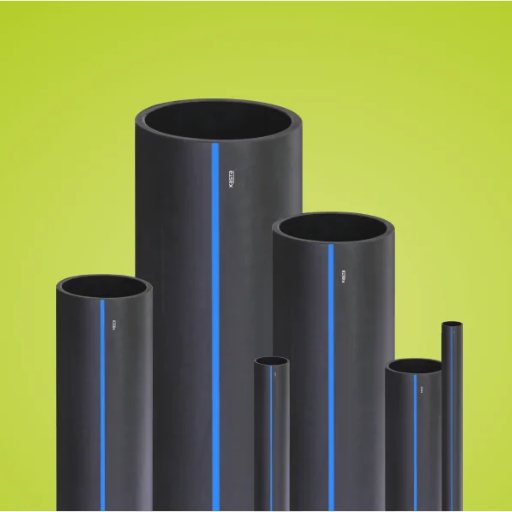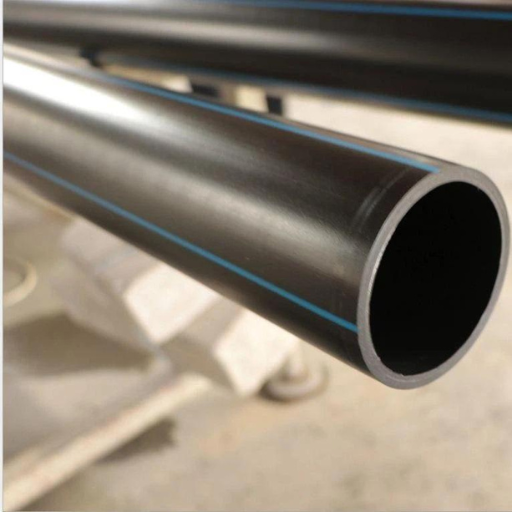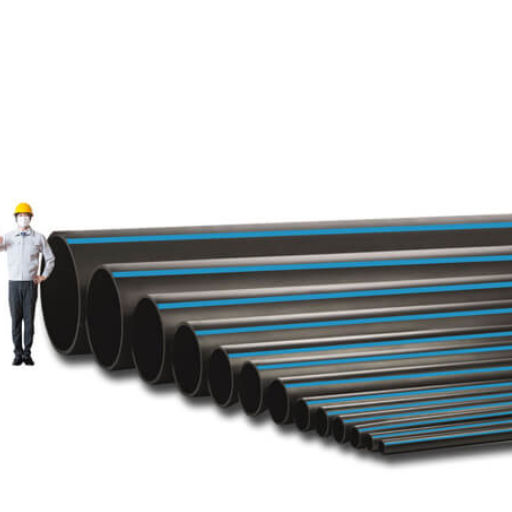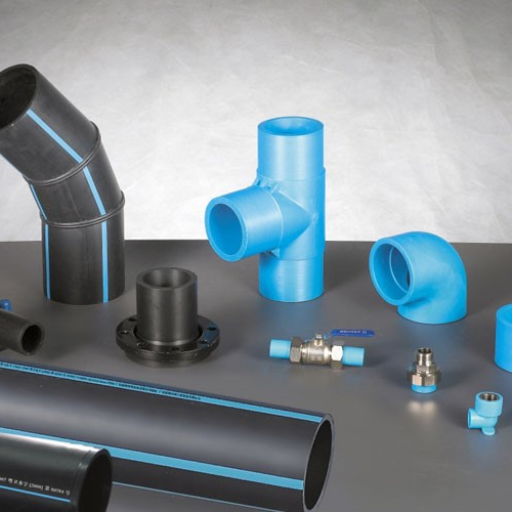HHigh-density polyethylene(HDPE) pipes have become popular in various industries due to their durability, flexibility, and high corrosion resistance. Understanding the pressure ratings of these pipes is crucial for ensuring their effective performance in different applications, such as water distribution, gas transportation, and sewage systems. This guide aims to provide a comprehensive overview of HDPE pipe pressure ratings, including the factors that influence these ratings, the standards that govern them, and practical considerations for installation and maintenance. By the end of this article, readers will clearly understand how to select the appropriate HDPE pipe for their specific needs while adhering to safety and efficiency guidelines.
What is the Pressure Rating of HDPE Pipes?

Understanding HDPE Pipe Pressure Ratings
The pressure rating of High-Density Polyethylene (HDPE) pipes, also called Pressure Class (PC) or Maximum Operating Pressure (MOP), is the ability of the pipe to withstand internal water pressure without leaking. Several factors determine this rating: pipe diameter, wall thickness, and material properties governed by industry standards like ASTM(American Society for Testing and Materials) and AWWA(American Water Works Association). Ordinarily, HDPE pipes come in psi(pound per square inch) ratings. They are classified into various pressure classes, hence helping engineers and builders in the proper selection of a pipe for applications ranging from plumbing in residential areas to large-scale infrastructure projects. By knowing these ratings, one can ensure safe, reliable, long-lasting piping systems.
How are Pressure Ratings Determined?
Pressure ratings on HDPE pipes are obtained through materials testing and engineering analysis. The mprimaryway is by subjecting the pipe to hydrostatic tests,, filling it with water until it bursts. These results help in giving MOP value for the particular pipe. In addition, there are other factors, such as the temperature of conveyed fluid and its purpose, which must be considered while making up these figures,, and long-term material aging effects. These guidelines provided by industrial bodies such as ASTM and AWWA documents help determine the appropriate pressure ratings to guarantee that pipes deliver reliable performance under intended service conditions.
What Is The Maximum Allowable Operating Pressure?
Maximum Allowable Operating Pressure (MAOP) is the highest pressure a pipeline can safely handle during regular operation. It depends on various issues, such as the material properties of the tubing itself, fluid transport temperature, and safety margins established by relevant industry standards. MAOP prevents failures and maintains system integrity across different operating situations. Engineers and operators need to follow MAOP requirements to minimize risk related to overpressure cases, which may result in equipment destruction or harmful consequences.
How to Choose the Right HDPE Pipe for Your Project?
Factors Influencing Pipe Pressure Ratings
Several key factors determine the pressure ratings of pipes, specifically high-density polyethylene (HDPE) piping. First and foremost, the tensile strength, elasticity, and other intrinsic properties of the material play a significant role in deciding how much pressure can be withstood by the pipe. Secondly, ambient temperature and fluid being conveyed determines whether or not high temperatures can weaken materials. Lastly, to withstand pressurized fluid flow, the piping system design, including wall thickness and diameter, should comply with industry standards. Furthermore, some factors include the pipe agape during its service and environmental aspects like soil condition and external loads. In addition, installation practices and maintenance procedures significantly affect the integrity and pressure ratings of the piping system.
What is PE4710 and How Does it Affect Pressure Ratings?
PE4710 is a specific grade of polyethylene commonly used to manufacture high-density polyethylene (HDPE) pipes. This grade exhibits excellent resistance to stress cracking,, making it ideal for various applications,, including water distribution systems or natural gas pipelines,. These improved material qualities imply that PE4710 pipes have higher pressure ratings than earlier grades. As a result, this material can survive under higher temperature and pressure conditions, thus enhancing safety levels within a pipeline network. For HDPE pipes, opting for PE4710 translates into an extended lifespan and reduced chances of failure when used under high-pressure conditions.
Installation Considerations for Pressure Pipes
During installation, proper techniques must be adhered to for reliable system operation and safety when dealing with pipes used in pressurized systems. Firstly an unyielding stable foundation that minimizes settlement or movement should be put up so that stress is avoided on pipes placed upon such surfaces. Handling these items with utmost care while they are transported or installed is essential to prevent damage. Moreover, seals should be well done on all joints and fittings made by the manufacturers. Post-installation testing, like hydrostatic testing, must be conducted to identify possible leaks before the system is commissioned. Finally, it must be considered that certain environmental factors, such as temperature changes and soil conditions, will determine how long these pipes remain functional over their lifetime.
What are the Applications of HDPE Pipes in Different Industries?

Industrial Applications of High-Density Polyethylene
The exceptional strength and versatility of high-density polyethylene (HDPE) pipes make them popular in various industries. In the municipal sector, HDPE pipes are used for water supply, wastewater management, and stormwater drainage systems because they do not rust easily and resist chemicals. Also, the oil and gas industry employs HDPE to transfer liquids and gases since it is strong enough to withstand high temperatures and pressures. In addition, HDPE pipes are used in agriculture as irrigation systems that help distribute water with minimal leakages. Due to its durable nature and ease of installation, HDPE is a common material in construction sectors requiring geotechnical applications such as lightweight structural fill or land reclamation projects. Generally, through diverse industrial applications, the flexibility of HDPE leads to performance improvements and cost reductions.
How HDPE Pipes are Used in Water Supply Systems
HDPE pipes continue to be preferred over other materials for water supply systems due to their excellent corrosion resistance properties against environmental stress-cracking agents and chemicals. They ensure a continuous flow of clean water free from contamination, reducing risks associated with potable water distribution system failures. The interior surfaces are smooth, improving frictional characteristics, thus promoting efficiency during transportation of the water resource. Moreover, these types of pipelines can be fitted more efficiently since they can be joined using multiple joining techniques, e.g., butt fusion welding, especially when installation has to cross rugged terrain, which has proved challenging to some engineers before now. To add on this point also, the weight balance between total length per linear meter installed, e.g., Kg/m ratio, where lighter steel sometimes brings complexity at handling its relative robustness compared to hose made from PE plastics, causing construction delays due to problems related to to heavier units, quickly even if there is no necessary equipment available thus making project delay inevitable.
Natural Gas Distribution with PE Pipes
Lightweight property f lexibility and durability of polyethylene (PE) pipes make them ideal for natural gas distribution.PE pipes are made to meet the strictest safety regulations that ensure reliable, efficient pipeline systems with minimum risks of leaks and environmental contamination. It can withstand high pressure, making it applicable in urban and rural areas. At the same time, its resistance to corrosion and cathodic protection ensures that these pipes last long, thereby reducing maintenance costs. Additionally, quick deployment and overall project costs have been reduced by ease of installation and the ability to adapt to different types of terrains, making PE one of the preferred options when choosing natural gas infrastructural elements.
What is the Impact of Internal Pressure on HDPE Pipe Performance?

Piping Systems and Understanding Internal Pressure
Internal pressure in piping systems highly affects materials such as HDPE and PE pipes. As a result, the stress on the pipe walls is also elevated due to an increased pressure which may cause deformation if the materialmaterial’sh is surpassed. Ensuring the pipes’ anticipated internal pressures will not fail depends on proper design. The maximum internal pressure that ca pipe can safely withstandluenced by factors like temperature, pressure rating, and diameter In applications with fluctuating pressures, however, it becomes iessentialto consider variations in pressure or cyclic loading that may result in fatigue failure over time. Moreover, appropriate jointing methods and fittings are essential for maintaining system integrity under internal pressure,, preventing leakage and enhancing overall operational safety.
How Pressure Surges Influence Pipe Pressure Ratings
Water hammers or pressure transients (also called surge) can significantly impact pipe ratings like those made from HDPE or PE systems. For instance, a shock wave travels through piping systems when there is an abrupt change in flow velocity, as occurs when a valve closes rapidly or when a pump starts up or stops suddenly. These surges can momentarily increase the pressure beyond regular operating limits and perhaps surpass the rated capacity of pipes. Piping systems must be designed to protect against sudden pressure adequately rises, including surge tanks, air chambers, or relief valves intended to mitigate the effects associated with these transient pressures. This implies that even during the structural design stage, it is essential to conduct hydraulic analysis thoroughly to ascertain dependable operation under any conditions under which they are used since, if not, one could witness leakages leading to the separation of joints on top of other things.
Hydrostatic Testing and Its Importance
During hydrostatic testing, piping systems and pressure vessels are evaluated for their integrity and strength. For example, water fills this system and is subjected to higher than standard operating pressures, typically 1.5 times the maximum allowable working pressure. This test helps detect any leaks, poor spots, or faulty joints that could compromise safety. By observing closely over the testing period, engineers ensure that the system will survive operational pressures; this implies they monitor such pressures to avoid failure. Besides satisfying safety requirements, regular hydrostatic tests also improve piping systems’ overall reliability and durability, thereby preventing expensive repairs and downtimes.
What are the Benefits of Using HDPE Pipes?

The Effective Use of Polyethylene in Pipe Systems
This made me find several reasons why polyethylene is used in piping. To begin with, being highly flexible and lightweight has made polyethylene (HDPE) pipes easier to handle and install, especially in difficult places. Also, they are resistant to corrosion and chemicals, so their longevity is much greater than that of other usual materials. This makes the whole system reliable, therefore reducing the cost of maintenance. Moreover, these tubes are characterized by smooth inner surfaces that minimize energy wastage through friction losses, necessitating less power input. In summary, it can be noted that its strength and its ability to bend without breaking down make it an ideal material for several applications in modern pipe systems.
The Longevity and Service Life of HDPE Pipes
As I have researched hemes such as the lifespan of HDPE pipes and their longevity, it was revealed that if well installed and maintained, they last more than 50 years. These environmental stresses include UV radiation, temperature variations, and soil conditions, among many others, which are resistant to, thus making them durable even for long-term use. Furthermore;, however, HDPE pipes do not crack or break easily,, ensuringa more extended period of service life as far as this object is concerned. The advantages mentioned above provide dependable operation for decades but, at the same time, save resources due to reduced replacement needs and maintenance costs.
Comparison Of The Cost-Effectiveness Of HDPE With Other Materials
Based on my analysis of cost-effective uses of HDPE compared to other alternatives, I discovered that the initial investment in using high-density polythene could be equal or slightly higher. Still, substantial savings are accruing over time since its service life is considerably longer than other options available. Therefore, one can say that during specific periods like PVC’s liPVC’se oPVC’stliPVC’se’s siron’s tiron’sesiron’sacements or repair work are often needed because such substances go bad faster due to corrosion, HDPE has an advantage. In addition, its installation process is usually faster and, therefore, less expensive in terms of labor costs because it is lighter than other materials and can be bent. Finally, from these two perspectives, when I considered both short-term and long-term expenses, I found that HDPE is the most cost-effective material for piping solutions across various applications in this discussion.
Reference sources
- Working Pressure Rating of HDPE Pipe and PVC Pipe – This document provides detailed technical data on tHDPE performance and pressure ratings
- Understanding HDPE Pipe PSI Rating: The Ultimate Guide – This guide offers comprehensive information on the PSI ratings of HDPE pipes, including their applications in various systems.
- Calculating HDPE Pipe Pressure Rating – This source explains the standards and methods used to calculate the pressure ratings of HDPE pipes, ensuring they meet industry requirements.
Frequently Asked Questions (FAQs)

Q: Can HDPE pipes made from plastic be used for drinking water?
A: Yes, HDPE pipes made from authorized materials, including PE4710 HDPE, are safe for drinking water because they are highly resistant to chemicals and have low leachability.
Q: What is the role of hydrostatic design stress in HDPE pipes?
A: Hydrostatic design stress is a critical parameter that determines the pressure rating of an HDPE pipe. It specifies the highest internal pressure that can be withstood by a pipe at given temperatures for a particular duration, hence ensuring safety and reliability.
Q: How does the size of a pipe affect its pressure rating regarding HDPE?
A: The dimensions of an HDPE pipe play a crucial role in its pressure rating. Generally, larger pipes may have lower ratings than smaller ones, as other factors, such as wall thickness and dimension rati, relating to design factors, affect pressure ratings.
Q: Are there different pressures that various applications require HDPE pipes to withstand?
A: Yes, different types of applications will require various pressure levels, as indicated by their grades. For instance, PN 10-rated pipes can handle up to 10 bars in most cases, making them suitable for applications like sewage conveyance and irrigation.
Q: What is the minimum strength required for industrial HDPE pipes?
A: However, a specific application will determine the minimum required strength, particularly when considering various pressure ratings. Furthermore, the operating conditions have been considered by having safety factors
Q: What types of materials are used to make pipes?
A: Commonly used materials include PE 80 and 100. PE 100 has better performance characteristics because it is sturdier, making it ideal for higher-pressure applications.





